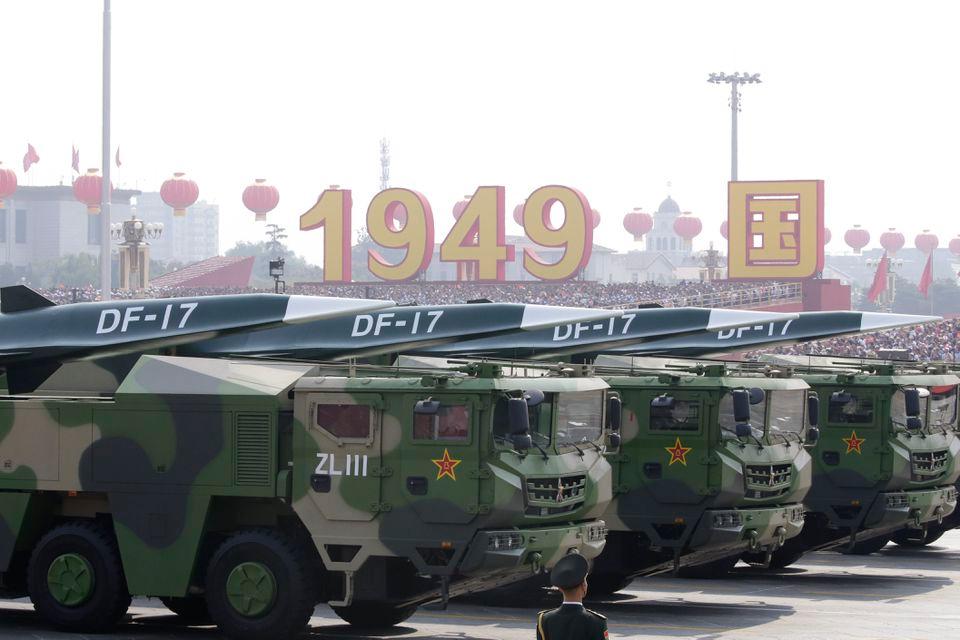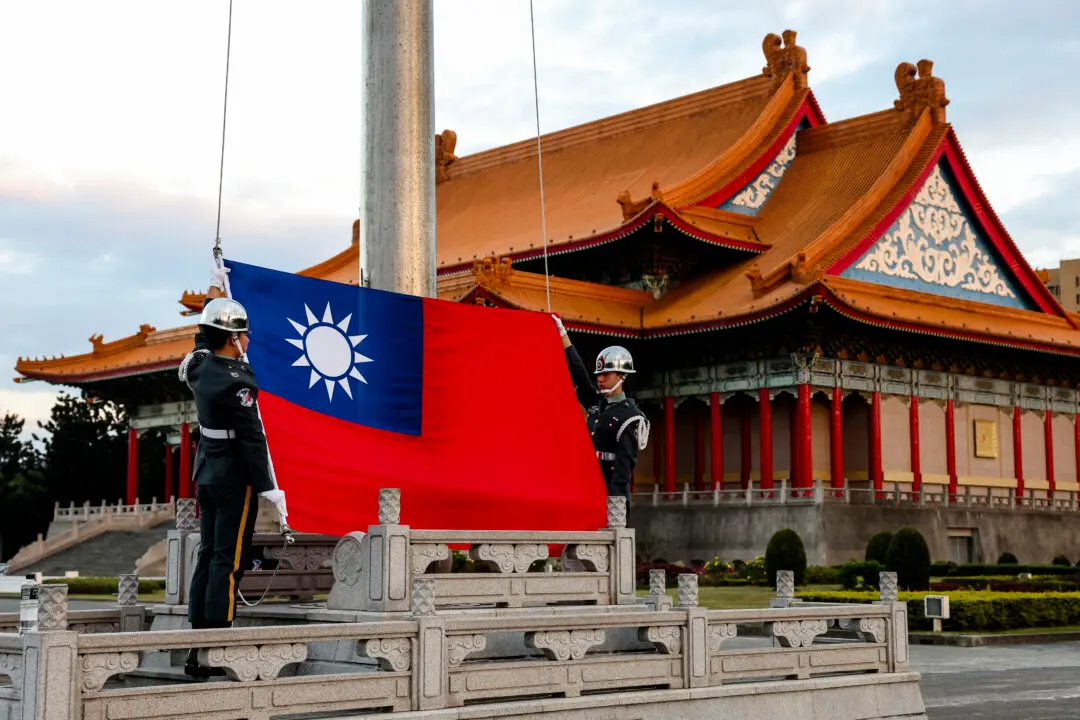For eight long days, a Chinese spy balloon bobbed along in the skies above the United States and Canada.
First, it appeared to be heading north off Alaska’s Aleutian Islands, then east toward British Columbia, before suddenly diverting again south and east in a course that would bring it over some of the most critical U.S. military facilities.
The Biden administration has thus far declined to specify which sites the Chinese balloon surveilled, but the dirigible visibly traveled near at least three military bases responsible for overseeing America’s nuclear arsenal.
In Montana, the spy balloon lingered over Malmstrom Air Force Base, the site of 150 silos that house many of the nation’s nuclear-capable intercontinental ballistic missiles.
In Nebraska, it hovered near Offutt Air Force Base, where U.S. Strategic Command oversees the maintenance and deployment of the military’s nuclear weapons.
In Missouri, it careened around Whiteman Air Force Base, which operates the Air Force’s nuclear-capable B-2 stealth bomber.
The White House lambasted the presence of the airship as a violation of U.S. sovereignty, with national leaders in a collective uproar over the spherical white menace as it plodded across the span of the continental United States.

President Joe Biden said that he wanted to order the military to shoot the balloon down when he was first briefed on the intrusion on Feb. 1. But the Pentagon wanted to ensure that no debris injured those below and so let the balloon continue its traversal of U.S. airspace until it reached the waters of the Atlantic Ocean on Feb. 4 and was finally met with a definite end in the form of a single Sidewinder missile fired from a U.S. fighter jet.
As the military continues efforts to recover what’s left of the downed device, the Pentagon and FBI’s analysis of the debris and its intentions is just beginning.
But Communist China’s efforts to use espionage and military coercion to undermine and overcome the United States have long been in the works, and congressional leadership remains stunned at the administration’s decision to let an adversarial aircraft meander through U.S. airspace at will.
Air Force Gen. Glen VanHerck, who serves as commander of North American Aerospace Defense Command, said on Feb. 6 that the incident provided the United States with “unique opportunities” to conduct counterintelligence against the balloon, but declined to comment on what capabilities were deployed to covertly examine the balloon.
VanHerck said that the intelligence gathered from the balloon and how it operated was “well worth” the wait of shooting it down and added that the United States conducted counterintelligence to prevent the balloon from gathering useful information, without detailing the specific measures.
For Reps. Mike Gallagher (R-Wis.) and Raja Krishnamoorthi (D-Ill.), who are the chair and ranking member, respectively, of the House select committee for competition with the Chinese Communist Party (CCP), the incident was nothing less than a debacle that they believe demonstrates Washington’s continued inability to recognize that communist China is an adversarial nation.
“Indeed, this incident demonstrates that the CCP threat is not confined to distant shores—it is here at home and we must act to counter this threat.”

The Persistent Threat of Communist China
The presence of a Chinese communist spy balloon hovering over U.S. homes and military bases is alarming enough for most people.For Paul Crespo, a former Marine officer at the Defense Intelligence Agency and now president of the Center for American Defense Studies, the story only gets darker from here.
In addition to collecting intelligence on U.S. nuclear facilities and military decision-making, Crespo believes that China’s balloon incursion could be a dry run for an attack that would likely take place during a U.S.–China war for Taiwan.
Crespo is concerned that the regime could use similar high-altitude balloons to conduct attacks using electromagnetic pulse (EMP) weapons against U.S. bases and infrastructure.
“The biggest threat is sending one or more of these high-altitude balloons over the U.S. with a small nuclear EMP device,” Crespo told The Epoch Times in an email.
“Detonated at extremely high altitude, EMPs could knock out power and communications across the U.S., wreaking widespread havoc for a year or more without firing a shot on the ground.”
EMPs are bursts of electromagnetic energy that disrupt communications and damage electronic equipment. An EMP can be created by nuclear missiles, radiofrequency weapons, and natural phenomena such as geomagnetic storms.
In most scenarios, an EMP would need to be detonated at a much higher elevation than the Chinese spy balloon was at in order to cause mass destruction across a vast swath of territory.
If the EMP’s purpose were to knock out a smaller target, however, such as a U.S. nuclear command-and-control facility, a balloon like the one shot down over the weekend would be a near-perfect delivery device.
For Crespo, the Biden administration’s decision to allow the balloon to continue its malign adventure only increased the potency of such a threat.
By failing to take decisive action against the intrusion immediately, Crespo said, the administration had sent Beijing the signal that it’s willing to accept violations of its sovereignty.
“Despite those who claim otherwise, the unprecedented and slow-moving Chinese surveillance balloon across the entire U.S. gave China intelligence it couldn’t otherwise get on nuclear, communications, and other critical targets,” Crespo said.
“The balloon tested U.S. surveillance and counter-surveillance abilities and reactions. But, most importantly, it tested political will, and Biden’s willingness to let it cross the U.S. before finally downing it failed that test.”
It’s a stark assessment, but one that has traction among many political figures, including former Secretary of State Mike Pompeo.
Before it was revealed that Biden had ordered the balloon to be shot down, Pompeo said that the president’s delay gave the CCP all the indication it needed to conduct further hostilities against the United States, its allies, and partners. Particularly so, he said, against Taiwan.
“If we can’t take down this balloon, if President Biden won’t respond to this seriously, I doubt that his statement that we will defend Taiwan and help the Taiwanese people is something that [CCP leader] Xi Jinping will ever take seriously,” Pompeo said in a Feb. 3 interview with Fox News.
“The fact that they’ve now penetrated our airspace, put a very visible symbol of their country over our airspace, and we have done nothing, this is a green light for bad guys all around the world, including Xi Jinping.”

Preparing an Arsenal
The CCP’s efforts to spy on U.S. military development aren’t new. But it’s vital to understand why the regime is interested in U.S. nuclear facilities now, and the preparation it has undertaken for a potential conflict with the United States.Killing With a Borrowed Sword
The CCP couldn’t accomplish this vast and highly sophisticated military modernization program on its own. To fully develop the systems needed to overcome the United States, the regime requires research and technologies developed first in America.That’s one reason why the CCP uses illegal spy balloons to collect data on U.S. military bases, and why Chinese state-sponsored talent programs aim to infiltrate and export U.S. nuclear research.
By recruiting experts and scholars from abroad to study at work in China, such talent programs aim to develop a new generation of researchers in areas crucial for China’s technological and military development.
The most telling case of this phenomenon concerns the Los Alamos National Laboratory (LANL), the United States’ most advanced nuclear research center.

An All-Encompassing Spy Campaign
The effort to steal vital technologies and research from the United States is part of a much larger campaign—one that’s decades in the making—to undermine the country, of which the spy balloon incident is just a small component.FBI Director Christopher Wray has described the communist regime as the single biggest cyber and counterintelligence threat facing the United States.
For years, CCP intelligence agents and their proxies have violated U.S. sovereignty and spied on American citizens, engaged in illegal campaigns to forcibly repatriate Chinese dissidents, and engaged in an array of brazen campaigns to covertly steal cutting-edge technologies.
In recent years, federal prosecutors have brought dozens of cases against Chinese and Americans over the theft of U.S. technology and trade secrets in a multitude of areas from cancer research to aviation secrets to seed technology.
Wray has said that almost half of the FBI’s nearly 5,000 counterintelligence investigations across the country are connected to China, adding that in the past decade, there has been roughly a 1,300 percent increase in economic espionage cases linked to the regime.
Another area attracting growing scrutiny is the hugely popular Chinese-owned app TikTok, which U.S. officials say could be used by the CCP to access Americans’ data and manipulate public opinion through the site’s addictive algorithm.
All of these efforts, according to retired Air Force Gen. Robert Spalding, are part of the CCP’s larger doctrine of “unrestricted warfare,” through which the regime weaponizes academia, economics, diplomacy, media, and technology to achieve military ends without risking overt conflict with the United States.
And, much like shooting down a balloon, Spalding believes there’s only one way to stop the threat.
“If they have any access to American society, then they’ll use that access to undermine American society. The only way to be successful ... is to eliminate their access to American society.”





